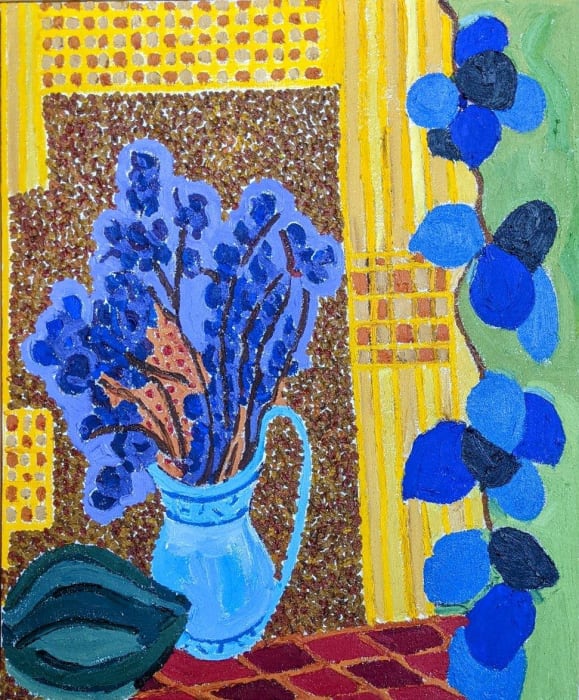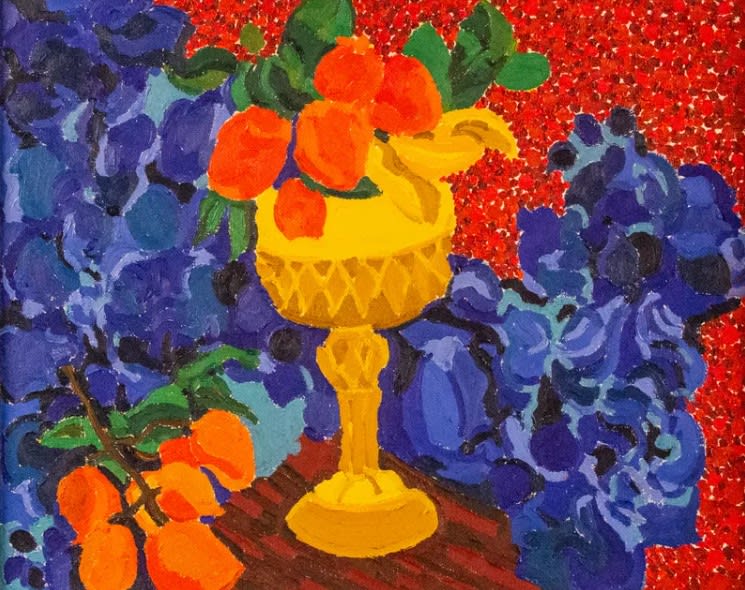Southern-born Lynne Mapp Drexler found her artistic voice during one of the most exciting and significant art movements of the 20th century. Born in Newport News, Virginia, in 1928, Drexler began her study of art as a child.
Her parents, who were very supportive of both the visual and performing arts, enrolled Drexler in various art courses. Her early introduction to music would directly influence her later mature work. After attending the College of William and Mary, Drexler became interested in contemporary art. She was encouraged to explore this venue by her uncle, who had ties to the Hudson River School of painting, and by some of her more influential teachers.
After moving to New York in 1956, Drexler immersed herself in the world of Abstract Expressionism studying with Hans Hofmann in both his Provincetown and New York schools. It would be Hofmann's work as a colorist and his theories on color that would be one of Drexler's most significant influences. She eventually went on to study with another well known artist and teacher, Robert Motherwell, at Hunter College. His intellectual views on Abstract Expressionism guided Drexler's own process of creating art. Her academic training from Motherwell, along with the lessons of color theory from Hofmann, would set the foundation for the style of painting for which she is known. Drexler's swatch-like patterns and painterly blossoms of color are quite unique when compared to her contemporaries of the Abstract Expressionist genre. By 1961, Drexler would have her first solo show at the Tanager Gallery.
In 1961, Drexler married painter John Hultberg, whom she met at the Artists Club. The couple was already integrated into the bohemian lifestyle of the New York art scene. To occasionally escape the pressures of New York, Hultberg's art dealer, Martha Jackson, bought him a house on Monhegan Island, Maine, which had a small summer art colony. For Drexler, summering on the island would be a major sea-change in her life. The solitude of the island and the inspiration of the natural surroundings would impact her artistic career. Drexler would sketch outdoors on the island. Back in New York during the winters, these sketches were reimagined into large colorful abstract paintings. Also, when in New York, she would frequent the opera and sketch during the performances.
These musically influenced sketches would also become incorporated into an entire series of oil paintings. Unlike her male counterparts, Drexler found it difficult finding gallery representation in the gender-biased atmosphere of the New York gallery world. Hultberg, on the other hand, was quite successful and was considered a talented up-and-comer as an abstract artist. The relationship between Drexler and Hultberg was often tumultuous and the couple would routinely separate throughout their lives. Although respectful of one another's work, they would continue to grow distant.
As the mid 1960s approached, the movement of Abstract Expressionism was coming to a close, being replaced by Pop Art and, shortly there-after, Op Art. At some point in Drexler's painting career, Abstract Expressionism had become artistically "bankrupt" for her. She would also lament that "[New York] was no longer a place of stimulation for me. I had no respect for most of the artists working there. They were out to make it. They had no commitment to art." Drexler was already making her own natural transition. to abstract landscape painting. Many of her paintings created just after 1962 are clearly inspired by the landscape with the concepts of musical elements helping to guide the pictorial arrangements. Drexler's affinity with nature and music became deeply intertwined in her work.
Unhappy with the male-dominated art system and art politics of New York, Drexler finally moved permanently to Monhegan Island in 1983. She had become an integral member of the year-round island community. The remoteness and solitude of the island would impact her work. Her paintings often reflect the everyday routines of life such as views from her windows, interior views of her house and even chores such as hanging laundry. The still life also became an important subject in Drexler's repertoire, often floral arrangements peppered with dolls from her collection. These depictions came to symbolize her acceptance and appreciation for her life on the island.
Drexler summed up her artistic career on the island stating, “I sell enough here to make a living off of. I am not rich…but I have what I want. I mean as long as I have food, heat, roof over my head, food for the cat, and paint I am happy. Oh and Jack Daniel’s.”
When Drexler was diagnosed with cancer and given a prognosis of three to six months to live, her biggest fear was that she would have to die on shore. Her closest friends became her hospice care group which allowed her the dignity of staying on the island. Drexler passed away in 1999 on Monhegan Island surrounded by her friends and fellow islanders. After her death, the estate had been bequeathed to her friends who were charged with the difficult task of assessing her body of work. While extracting the many paintings from the Drexler house, the executors of the estate, as well as the townspeople, were shocked to realize the magnitude and multitude of paintings. Works of art not seen for decades were pulled from the basement, closets and even from under mattresses. It was revealed that Drexler, who was very hesitant to talk about her career as an artist in New York, had not divulged the fact that these paintings even existed, including masterpieces from the era of Abstract Expressionism.
The first comprehensive exhibition of Drexler's work ran at the Monhegan Museum in 2008 and also at the Portland Museum of Art in 2008 and 2009. The exhibition was organized by the Monhegan Historical and Cultural Museum Association. Since then, her work has been exhibited widely in New York, Chicago, and Southern California. In 2018, a comprehensive European exhibition of the women of Abstract Expressionism, which included Drexler, occurred in London. In 2022, one of her works sold for over a million dollars for the first time.





